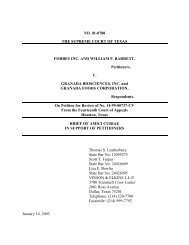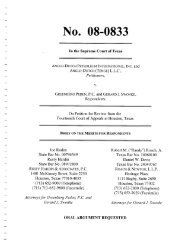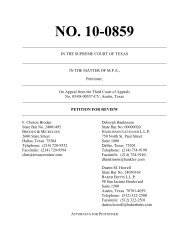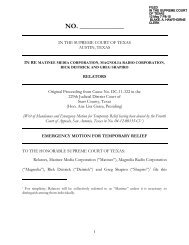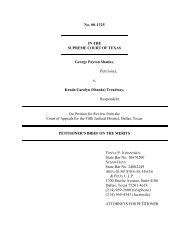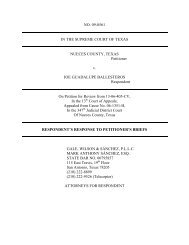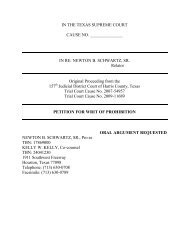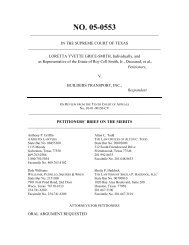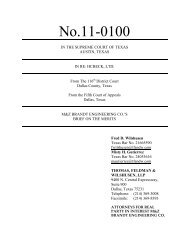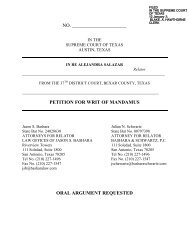DAIMLERCHRYSLER CORPORATION, Petitioner - Supreme Court ...
DAIMLERCHRYSLER CORPORATION, Petitioner - Supreme Court ...
DAIMLERCHRYSLER CORPORATION, Petitioner - Supreme Court ...
Create successful ePaper yourself
Turn your PDF publications into a flip-book with our unique Google optimized e-Paper software.
outinely making (or defending against) windfall payments for the mere risk of injury.<br />
Meanwhile, consumers who actually experience tangible injuries would receive smaller<br />
awards. See Schweitzer v. Consol. Rail Corp., 758 F.2d 936, 942 (3d Cir. 1985) (stating<br />
that unless “manifest injury” is required, “windfalls [will be awarded to] . . . those who<br />
never take ill” and those who suffer will receive “insufficient compensation”).<br />
Such “no injury” lawsuits often are filed as class actions to justify the expenses of<br />
the litigation. Recognition of “no injury” lawsuits thus encourages plaintiffs to bring the<br />
largest class action imaginable in order to create “blackmail” settlement pressure on the<br />
defendant notwithstanding the lack of merit of the allegations. See In re Rhone-Poulenc<br />
Rorer Znc., 51 F.3d 1293, 1298-99 (7th Cir. 1995). As a result, the economic distortions<br />
identified by Judge Wisdom and others are even more astounding when considering that<br />
the invocation of the class device multiplies the distortions millions of times over and<br />
browbeats defendants into paying huge settlements for meritless claims.6<br />
In addition, a host of negative practical effects for Texas courts and Texas citizens<br />
would flow from a decision to open the door to “no injury” lawsuits. As the new hub for<br />
“no injury” product liability class actions, it is safe to say that courts of this state would<br />
be flooded with lawsuits seeking to redesign products to alleviate the possibility of future<br />
accidents. After all, if Texas nurtures product liability class actions based solely on a<br />
product’s potential risk, almost every product in existence today could be the object of a<br />
6<br />
And assuming, contrary to Texas precedent, see suppra, that preclusion principles did not bar the bringing of a later<br />
claim based on personal injury or propeity damage, economic distortions still exist because allowing injured and<br />
uninjured consumers alike to assert product liability claims would generate a windfall to many consumers through<br />
double recovery (as presumably the vast majority of class members would not use their “no injury” recovery to<br />
remedy the alleged harm) while burdening manufacturers with much more than’the actual cost of the harm generated<br />
by a particular design defect. See Bririgestone/Fil.estne, 288 F.3d at 1017 & n.1.<br />
9




